Out of the Box
Season 10, #1: StoryShed joins FilmStack for some inspo and seasonal Nightwalking
WELCOME, ALL YOU NEW StoryShed Media free* subscribers! I’m grateful you’re here.
If you’re curious about StoryShed and what I write about, please check out the About page or drop a comment or question below. I’ve been a writer for as long as I can remember.
A multiple dropout of many Midwestern U.S. colleges and universities, I finally received a B.A. in English and American Literature in 1996—a year later I was hired as a New Titles Editor at a St. Paul, Minnesota, publishing house where I worked in trade book publishing for eight years. In 2003 I received a post-graduate certification from the University of Denver’s Publishing Institute. In 2006 I was hired as Senior Editor at Thomson-West, then a year later joined Law & Politics magazine as Managing Editor where I stayed for six years. I founded StoryShed Media in the spring of 2012 and currently work full-time as a copy editor for a global consulting firm while pushing StoryShed Media toward new heights.
Like here on Substack.
Between all that I was a spec screenwriter for awhile, then taught a course I created, Elements of Screenwriting, at a local nonprofit (more on them in a sec) after returning to Minnesota from L.A. in the early aughts. Ongoing personal fascinations include music, history, music history, art and artists, art history, of course film and its history, and publishing in all its forms from zines to online blogs and websites.
It’s never just “the one thing.” Oh no.
A couple years ago I switched StoryShed’s Substack to seasons based around the themes of “Nightwalking,” “Daytalking,” and “Stargazing,” a triad of personal beliefs and traits. This season (10) will include four episodes on Nightwalking before turning it over to Season 11, centered around Stargazing (I’ve linked to previous episodes to give you a better idea of what these terms mean, at least to me).
To kick off Season 10, film producer Ted Hope of Hope for Film reached out for a contribution to his ongoing FilmStack—an inspiring collaborative resource for filmmakers and storytellers of all stripes. I immediately thought of the nonprofit where I taught for almost a decade, IFP North (now FilmNorth—website linked below) and realized that all their recent good news was just the ticket for FilmStack.
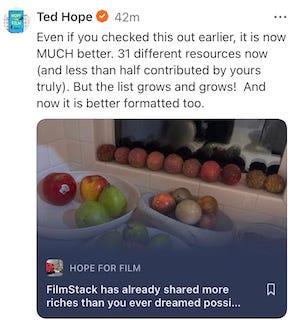
Jack in the Box
IT HAS FELT LIKE a lifetime since I dipped my toe in the screenwriting waters. Substackers will recognize my “recovering screenwriter” moniker from various posts and Notes—sometimes screenwriting feels like going through the wringer of a 12-step program—over navigating the entertainment business’ expected ups and downs.
Recently there was a lot of existential angst in the room when I attended a “Creative Sustainability Summit” sponsored by FilmNorth and another organization, Seed & Spark (website link below) on September 13th. Seed & Spark’s Marketing Manager Sav Rodgers hosted the day-long summit off St. Paul’s University Avenue.
The more things change, I thought, the more they stay the same.
That hit me during the morning’s topics—the anxiety behind starting a film project without the funds to see it through into post-production and successful distribution lingered in the air. But I was also inspired by the attendees (many new faces in town, and wonderful to see!) and the willingness to explore possibilities together and find creative solutions to what is a complicated business.
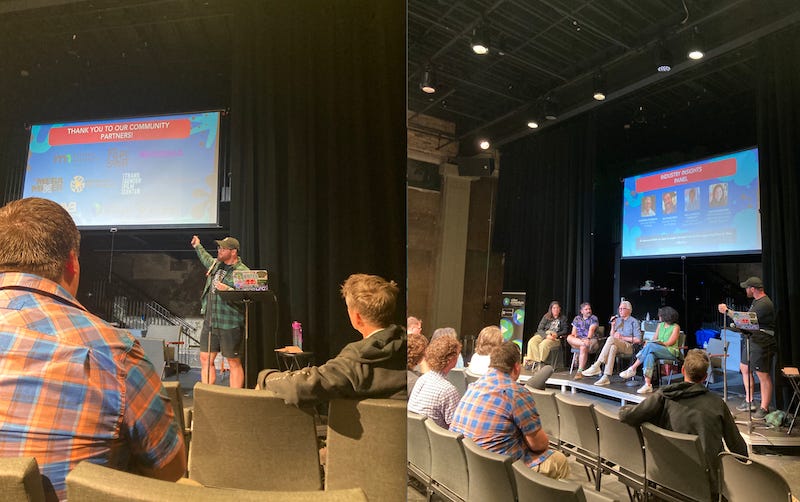
Seed & Spark’s funding operation is a fascinating development opportunity for independent filmmakers and I was grateful to get a peek behind the scenes.
During the seminar I mused about all my old script boxes and unfinished novel in boxes I’ve kept over the years because stories (and potentially, films) can come from other stories—even after decades in storage and being largely forgotten.
It’s a gift to know the material is there—the trick is resuscitating them.
Building Creative Partnerships
Former IFP North Executive Director Jane Minton hired me to teach Elements of Screenwriting some time after 2001, at what was then their home at the corner of Raymond and University avenues in St. Paul. It was a marvelous experience and I’m grateful to my former mentor David L. Grant for stepping in and taking over the course when I decided to move on.
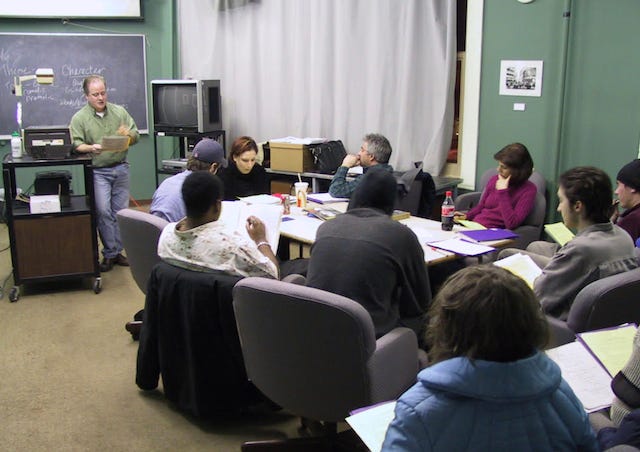
Twenty-four years later, FilmNorth Executive Director Andrew Peterson has expanded the organization’s reach with an all-new, state-of-the-art complex just a block from the old location. Andrew and I spoke after catching up at FilmNorth’s Open House this past July and via Zoom shortly thereafter.
The space at 2441 University Avenue is impressive to say the least and will accommodate new and aspiring filmmakers as well as seasoned professionals.
I’ll let Andrew lay it out in full:
“At a time when nonprofit arts funding is increasingly precarious, FilmNorth’s new Knight Media Arts Center demonstrates that bold thinking, innovative funding structures, and coalition building can transform an organization’s future—and serve as a national model.
Traditionally, limited organizational capacity leads nonprofits to scale their dreams to match the dollars they can reasonably raise. FilmNorth chose a different path. We began by educating ourselves, participating in two 18-month space-planning cohorts that exposed us to visionary models across the country. Rather than asking what we could afford, we asked what our community truly needed—and how FilmNorth could lead.
We designed our center through an impact lens. We convened stakeholders, including smaller QTBIPOC-led festivals and film organizations, who lacked access to educational and screening spaces. We prioritized environmentally responsible development, investigating what a Net Zero building could look like. We strategically sought a location that would maximize accessibility, ultimately focusing on the Green Line light rail corridor in Saint Paul, ensuring we could serve students and diverse communities already at the heart of our mission.
This vision unlocked new funding possibilities. Transit-Oriented Development grants, Historic and New Market Tax Credits, and state appropriations became tools to make a $14 million dream possible—despite FilmNorth’s largest prior campaign being under $1 million. By co-owning the building with our longtime development partner, D/O Architects, we not only secured expert management of complex funding mechanisms but also created a shared space that will sustain multiple arts organizations for decades.
FilmNorth’s story proves that arts nonprofits need not settle for “just enough.” By thinking bigger, engaging deeply with community needs, and leveraging innovative funding models, we built a center that is far more than a building—it is a hub for education, collaboration, and equity. This approach offers a replicable model for other organizations nationwide: dream boldly, align with community needs, raise your visibility, diversify your revenue streams, and design for long-term success.
The result is a 10,000-square-foot media arts center with strong street presence, built to LEED Gold standards. It is an all-electric building that generates 70% of its own power and features outdoor green space maintained through a rainwater recapture system. Inside, the center includes the 54-seat Bill Pohlad Cinema (shown below, with 4K DCP laser projection, 3D, Dolby Atmos), a 12-station editing classroom, two additional classrooms, a private editing suite, and common areas for community gathering. Accessibility was central to the design: restrooms are all-gender with ADA access and changing stations, and the building includes bike storage and a shower. Momentum has been so strong that we recently purchased the adjacent property to develop a soundstage, events space, and bar—yes, we even got a liquor license.
The specifics will vary by community, but the lesson remains the same: dream big, expand your coalition, build strategic partnerships, and explore every funding opportunity before you settle for anything less than what you and your community deserve.”
It’s truly an exciting time to be a filmmaker in the Twin Cities.
Shaping the Future
ROBERT BLAIR NDONDO-LAY is the Director of Engagement and Advancement at FilmNorth, also overseeing the McKnight Media Artist Fellowship Program.
He’s worked with filmmakers at every stage—from students just picking up a camera to established artists shaping the industry. Before joining FilmNorth in 2023, he taught in the Los Angeles Unified School District, where he adopted the Universal Design for Learning principles that enable learners to engage, develop, and advance in a way that works for them.
Robert spelled out how it works at FilmNorth in three steps.
1. Turning Curiosity Into Learning
“Engagement is about igniting curiosity,” he says, “and giving students the space to explore filmmaking in ways that connect with their lives and interests. At FilmNorth,
…this begins with summer camps for students ages 10 to 17, where participants experiment with cinematography, on-camera acting, stop-motion animation, film editing, motion picture directing, and more. These camps combine live instruction with hands-on projects and opportunities for students to showcase their work.”
But FilmNorth doesn’t “go it alone.”
…we partner with arts, culture, and grassroots organizations such as QUEERSPACE Collective, Project for Pride and Living, and Esperanza United, all of whom specialize in supporting and celebrating diverse and underrepresented communities… Even brief exposure—career talks, studio tours, or Q&As with working filmmakers—can spark imagination and show students that the film industry is not only a viable and sustainable career pathway for system-impacted individuals, but one that remains open as they transition back into their communities, helping them envision a future for themselves.”
2. Learn By Doing
“Now in its third year, Studio Thirteen immerses high school students in full production roles—from directing and cinematography to editing, sound design, and production design—while mentoring them through the creation of an original short film. Already we’ve seen its impact: students have gone on to prestigious national programs and entered the creative workforce with confidence and skill. Beyond technical training, Studio Thirteen fosters collaboration, problem solving, and creative leadership—qualities that prepare students not just for film, but for life.”
3. Where Preparation Meets Opportunity
“It’s a common misconception,” Robert says, “that youth programming need not provide advancement opportunities. Our data suggests the opposite.”
In a youth diversity report FilmNorth conducted in Fall 2022, most local filmmakers and media artists aged 16–24 struggle to find mentorship, collaborators, and support after high school—especially those not pursuing film school, art school, or fee-based programs. “Just as concerning,” Robert stresses, “the lack of paid opportunities or career-entry points often deters talented young people from continuing at all.”
To that end, FilmNorth has implemented a Youth Advisory Board, empowering young media artists to shape programming while gaining leadership experience and exposure to organizational decision making.
“Tech Scout Industry Tours will debut in 2026, giving aspiring media artists rare access to Twin Cities film, television, and media companies, where they’ll connect directly with professionals and see behind the curtain of daily industry operations.”
Education has always been important to me even when I complained about overbearing teachers and pedagogy taken to extremes. While teaching Elements of Screenwriting at FilmNorth’s former iteration, I learned as much (if not more) from my students as from my own experience.
Robert made it clear that early exposure has a powerful effect:
…the film industry functions as a talent pipeline—film festivals, theaters, and awards mark its terminus—but the pipeline only succeeds when its origin is strong. Without early exposure, access to resources, and meaningful opportunities, even the most promising young creatives can disengage before their potential is realized. …Meeting students where they are, and providing opportunities to engage, develop, and advance, we cultivate the next generation of filmmakers with the skills, confidence, and vision to shape the future of the industry. At its core, this work is about possibility—helping young creatives see not just what they can do, but who they can become.
Can I get an Amen to that?
Out of the Box and Under the Big Tent
It’s been exciting and inspiring to revisit filmmaker friends and meet new artists over this past summer. And I’m grateful to FilmStack for reaching out to reignite those feelings while I put this post together.
And I’d be remiss if I didn’t mention another opportunity—this time for artists of any practice, not just film. Kickstarter co-founder Yancey Strickler is launching an initiative to introduce A-Corps or Artist Corporations as yet another way for artists to get paid for their work and sustain their communities as well as themselves.
Check out Yancey’s TED Talk in the Resources below, and please leave a comment—would love to hear your thoughts.
Resources and extra texture
* Note: StoryShed is now accepting paid subscribers. Please consider upgrading now.
Explore FilmNorth’s website here. All FilmNorth Open House photos by Darin Kramnetz. FilmNorth education space photos by Sarah Morreim.
Find out more about the team and opportunities at Seed & Spark here.
Learn about an Artist Corporation from Yancey Strickler via his TED Talk, and on Substack:



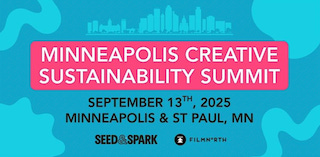
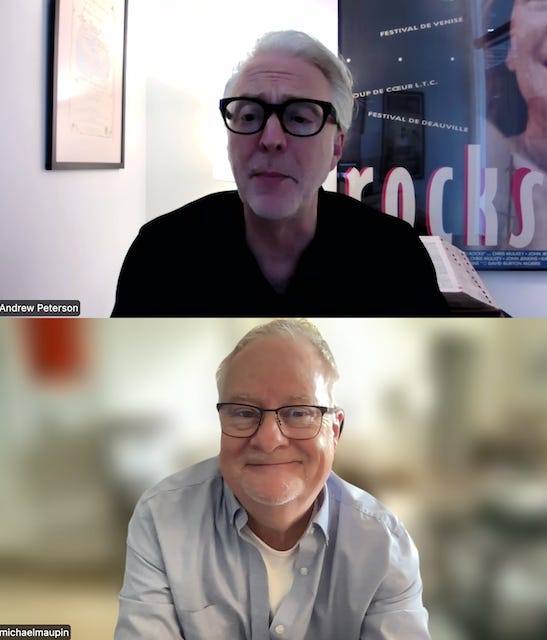
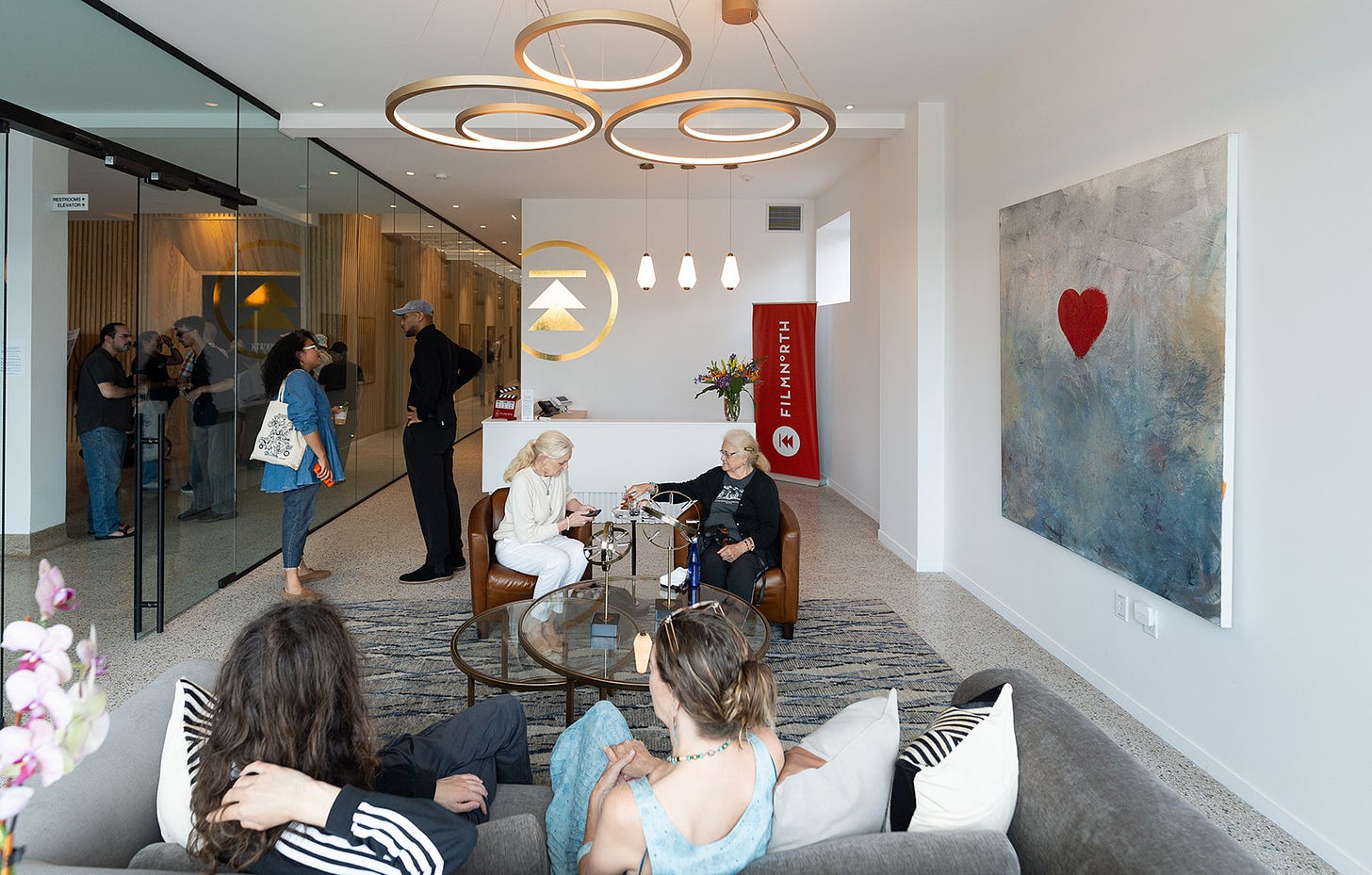
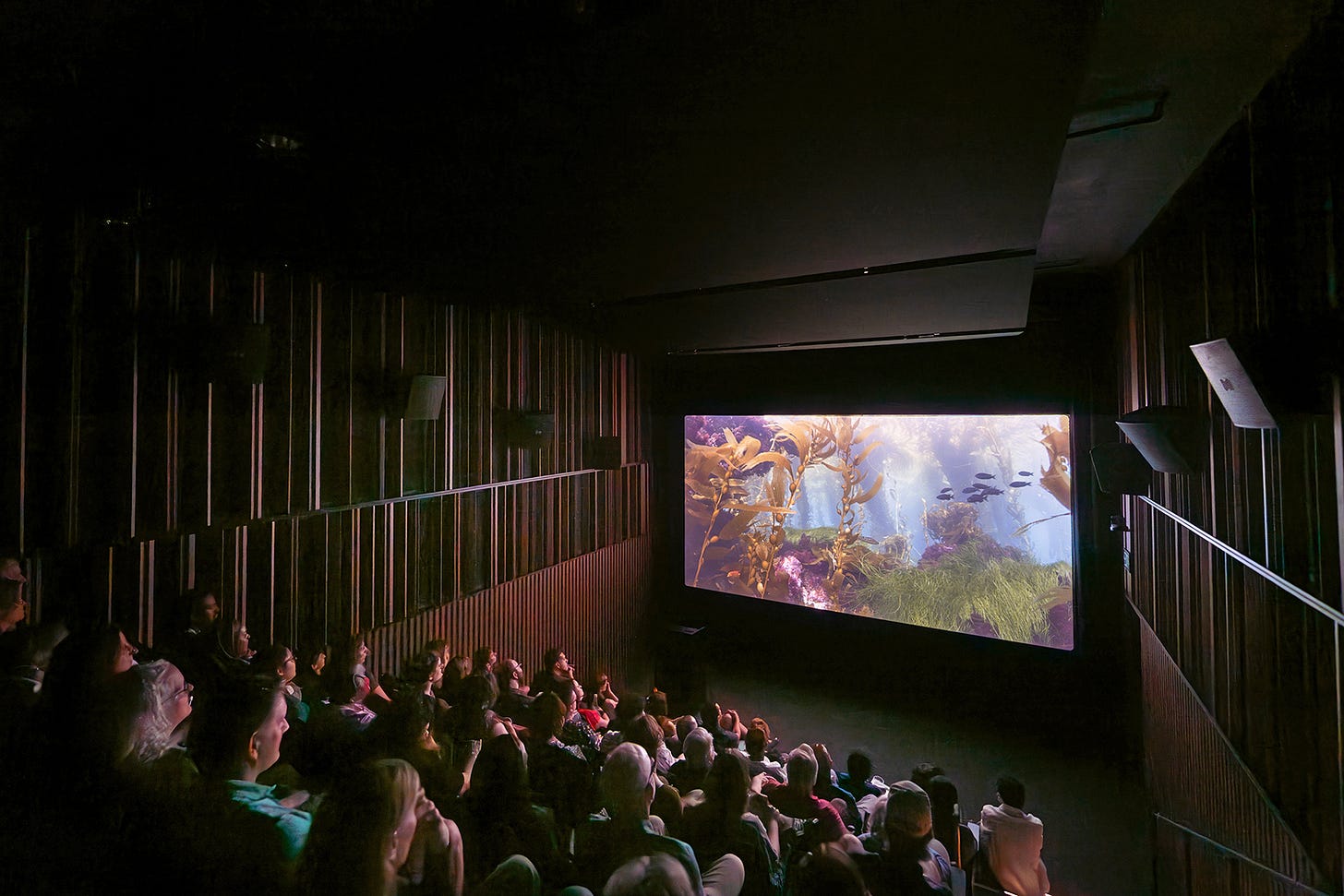
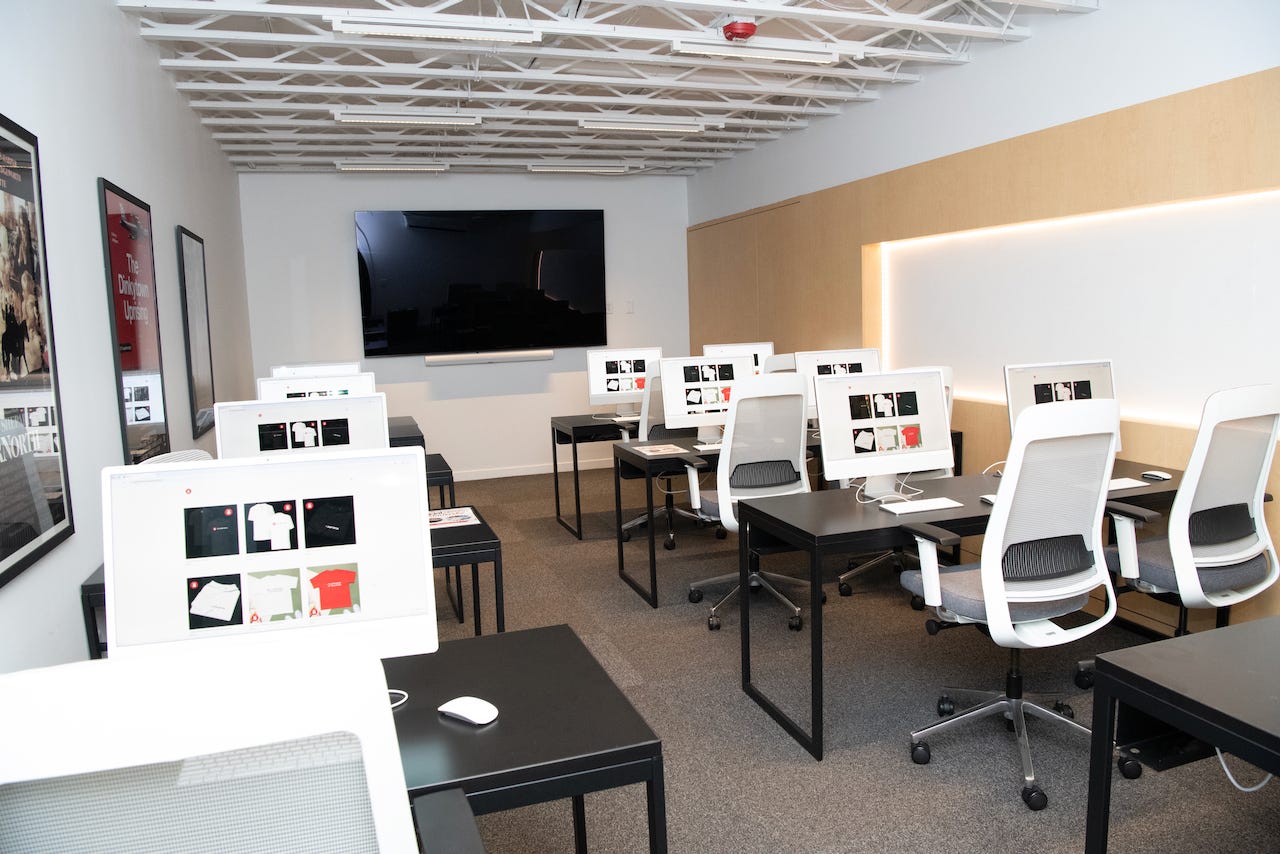
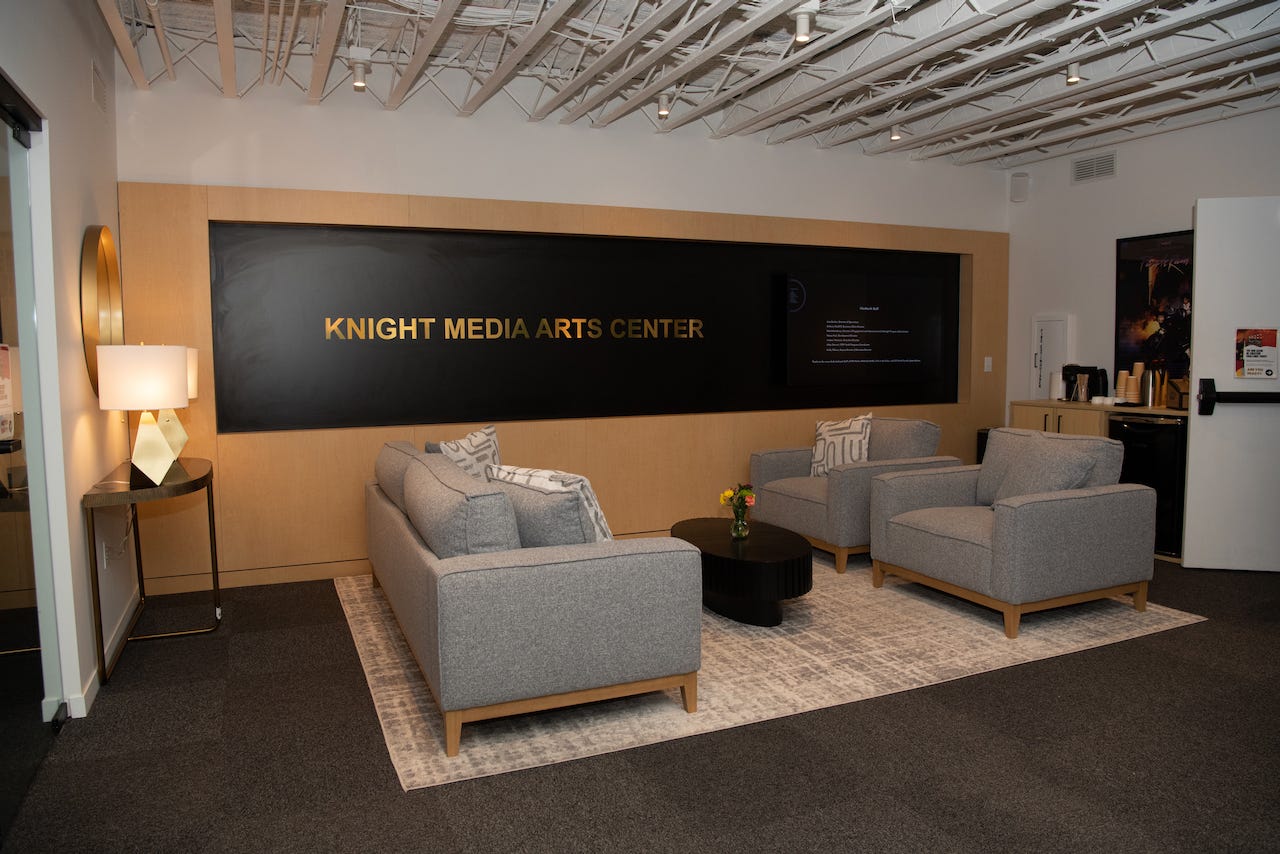
We need more MN made movies! Half of American movies seem to take place in LA or NYC.
Very cool, Mike!